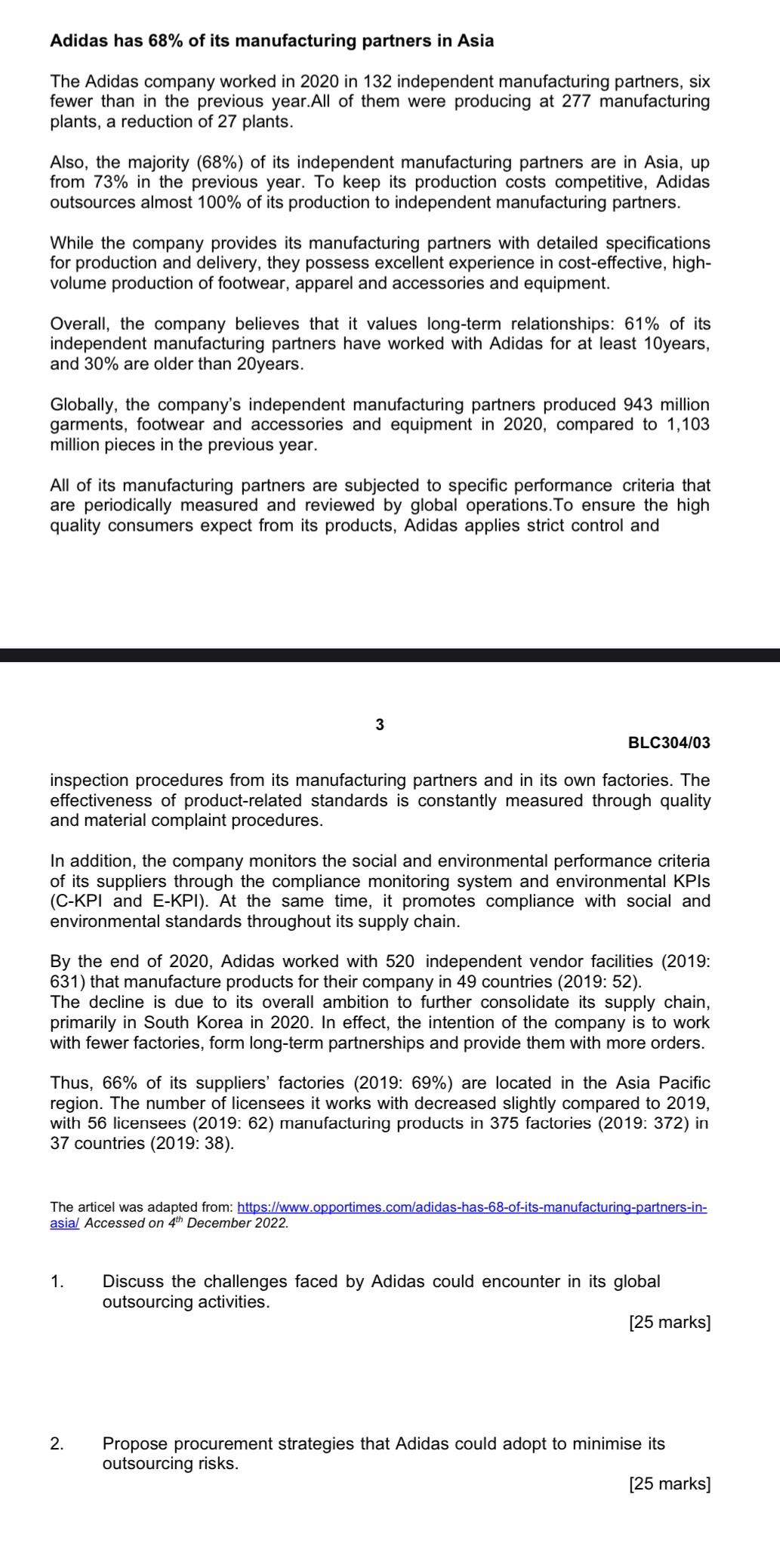Procurement Management.. In paragraph form
Adidas has 68% of its manufacturing partners in Asia The Adidas company worked in 2020 in 132 independent manufacturing partners. six fewer than in the previous year.All of them were producing at 27? manufacturing plants. a reduction of 27 plants. Also. the majority (68%) of its independent manufacturing partners are in Asia, up from 73% in the previous year. To keep its production costs competitive, Adidas outsources almost 100% of its production to independent manufacturing partners. While the company provides its manufacturing partners with detailed specications for production and delivery, they possess excellent experience in cost-effective, high- volume production of footwear, apparel and accessories and equipment. Overall, the company believes that it values long-term relationships: 61% of its independent manufacturing partners have worked with Adidas for at least 10years. and 30% are older than 20years. Globally, the company's independent manufacturing partners produced 943 million garments. footwear and accessories and equipment in 2020. compared to 1,103 million pieces in the previous year. All of its manufacturing partners are subjected to specic performance criteria that are periodically measured and reviewed by global operations.To ensure the high quality consumers expect from its products, Adidas applies strict control and BLC304IO3 inspection procedures from its manufacturing partners and in its own factories. The effectiveness of productrelated standards is constantly measured through quality and material complaint procedures. In addition, the company monitors the social and environmental performance criteria of its suppliers through the compliance monitoring system and environmental KPls (CKPI and EKPI). At the same time, it promotes compliance with social and environmental standards throughout its supply chain. By the end of 2020, Adidas worked with 520 independent vendor facilities (2019: 631) that manufacture products for their company in 49 countries (2019: 52). The decline is due to its overall ambition to further consolidate its supply chain, primarily in South Korea in 2020. In effect, the intention of the company is to work with fewer factories, form longterm partnerships and provide them with more orders. Thus, 66% of its suppliers' factories (2019: 69%) are located in the Asia Pacific region. The number of licensees it works with decreased slightly compared to 2019, with 56 licensees (2019; 62) manufacturing products in 375 factories (2019: 372) in 37 countries (2019: 38). The artioel was adapted from: httgswww.oggortimes.comladidas-ha5a68-ofits-manufacturing-partnersin- asiaf Accessed on 4m December 2022. 1. Discuss the challenges faced by Adidas could encounter in its global outsourcing activities. [25 marks] 2. Propose procurement strategies that Adidas could adopt to minimise its outsourcing risks. [25 marks]







